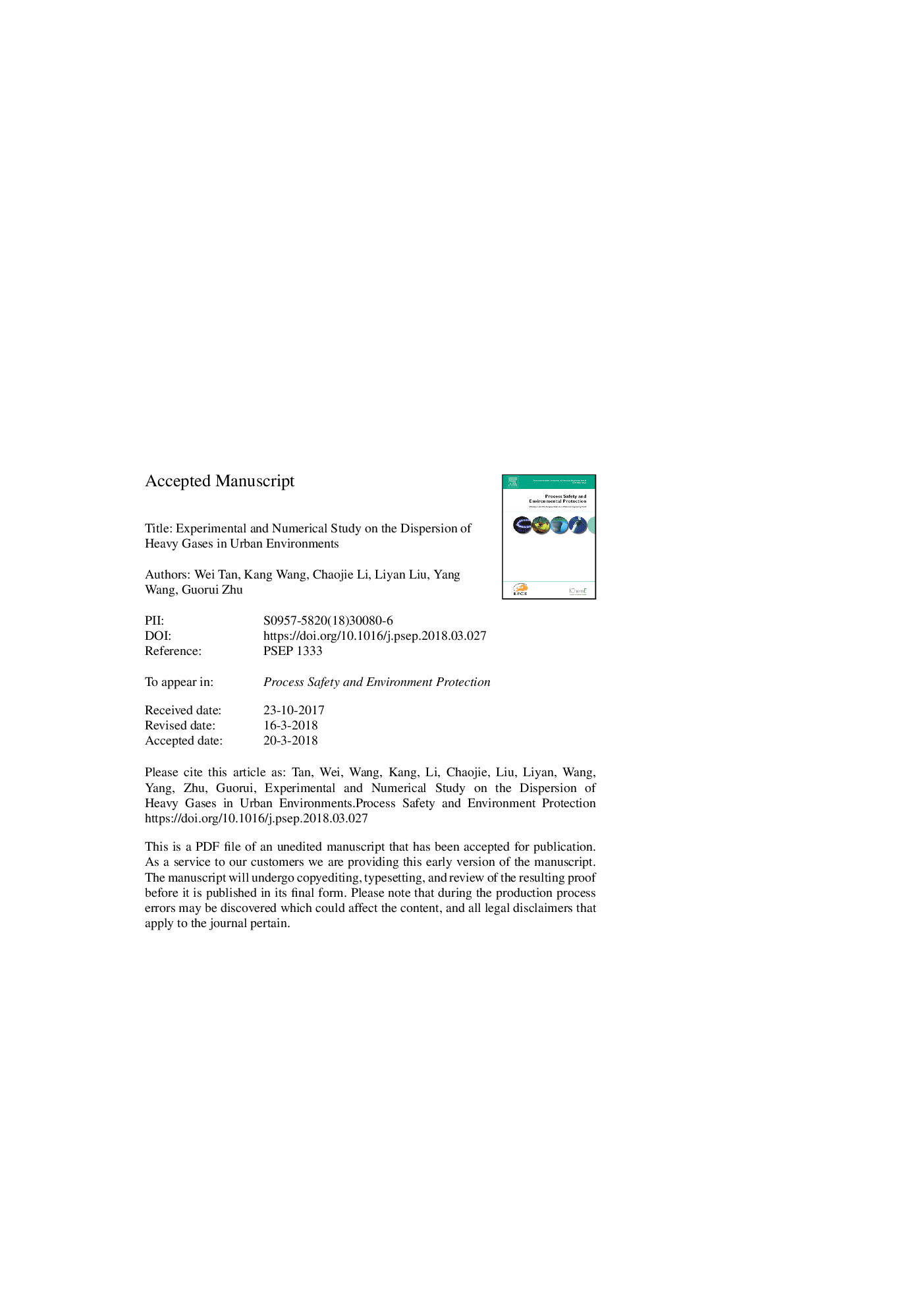| Article ID | Journal | Published Year | Pages | File Type |
|---|---|---|---|---|
| 6974233 | Process Safety and Environmental Protection | 2018 | 35 Pages |
Abstract
Heavy gas dispersion, including gravity settling that causes longstanding high-concentration zones near the ground, has become a popular research topic in recent years. A series of wind tunnel experiments containing complex layouts of building blocks were carried out to illustrate the comprehensive effect of obstacles and environmental factors on heavy gas dispersion and distribution in urban environments. The factors of wind velocity and direction, temperature, and relative humidity were considered. Five stages of variations in the carbon dioxide concentration with respect to both, wind velocity and time, were investigated at specific positions in urban environments. This paper proposes a mathematical approach to describe the concentration increasing and decreasing stage with linear fit and polynomial fit, respectively. A critical wind velocity profile,V=1.26(y0.28)0.22, at which both, the growth rate and the maximum concentration, can be at their lowest near the source. Heavy gas accumulates obviously on streets that are perpendicular to the wind direction and can flow across the roof of buildings much more easily. Gas accumulation dangerous concentration may occur near the leeward side of building due to the low pressure effects. The influence of temperature and relative humidity was apparent mainly near the source. Meanwhile, computational fluid dynamics was used to simulate the effect of gravity settling and fluid field details. Simulation results with a realizable turbulence model were obtained to compare with the experimental data, while conservative results were obtained for the building roofs.
Related Topics
Physical Sciences and Engineering
Chemical Engineering
Chemical Health and Safety
Authors
Wei Tan, Kang Wang, Chaojie Li, Liyan Liu, Yang Wang, Guorui Zhu,
